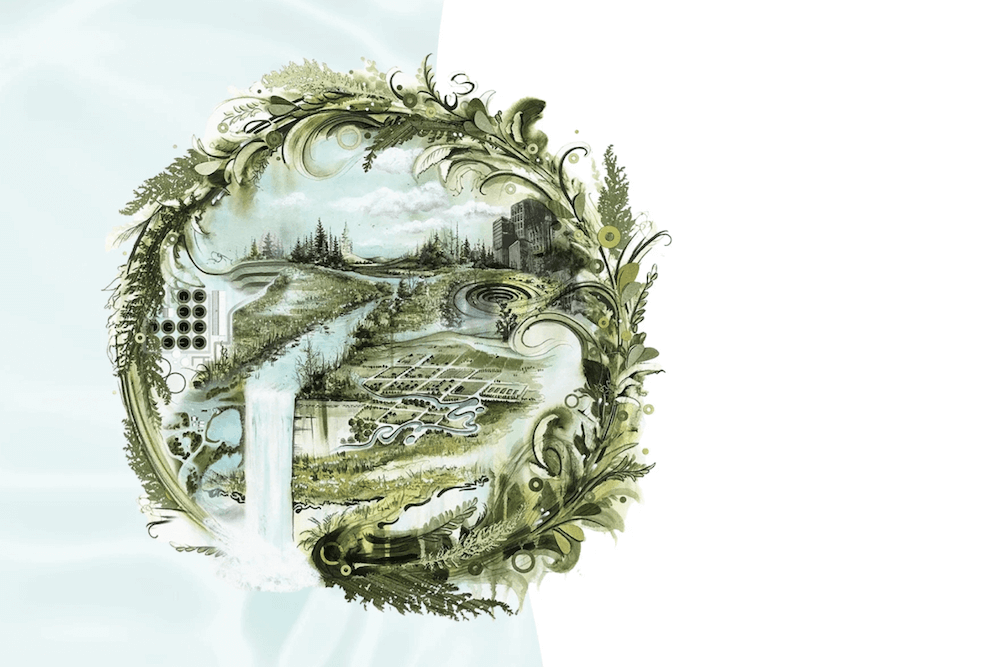By Sharon Omahen
University of Georgia
People have collected rainwater in barrels and buckets for
generations. Today, a more sophisticated rain harvesting system
can provide homeowners and their landscapes insurance against
water bans.
“Collecting water or harvesting rain has been done throughout
history when water is scarce,” Paul Morgan said. “What’s
different now is the way we do it.”
Morgan, operator of RainHarvest Company of Snellville, Ga.,
specializes in systems that allow homeowners to collect “almost
every drop of rainwater” that hits their roofs.
Metal roofs are best when it comes to rain collection. “You
lose
a lot of water when it runs across an asphalt shingled roof,”
Morgan said.
Stored Underground
Here’s how the system works. Rain falling on the roof is
channeled through the gutters by pipes that lead to an
underground collection tank or cistern. The water is stored there
until the homeowner chooses to use it for landscaping needs. At
that time, an electric pump brings the water to the surface.
“Our goal is to collect every bit of rainwater that falls on a
site,” Morgan said. “That’s impossible, but it’s still our
goal.”
During an average rainfall, rain-harvesting systems collect
about
two-thirds of a gallon of water for every square foot of roof, he
said.
“If it rains once a week, you’ll collect enough water to
irrigate
most home landscapes,” he said.
Seeing rain water “lost” prompted Morgan to expand has
landscape
business to include rain harvesting.
“I saw a lot of water running down the street, and I saw it as
a
resource that should be saved and used,” he said. “I also saw the
Chattahoochee (River) turn orange every time we had a heavy rain,
and I thought about how we could prevent this and reduce a lot of
erosion if we captured rain water.”
Over the past two years, Morgan has installed three home rain
harvesting systems. He is installing his first commercial system
atop the horticulture building at the Griffin campus of the
University of Georgia College of Agricultural and Environmental
Sciences.
Demonstration Site
“Our site will serve as a demonstration project,” said Wayne
Gardner, head of the UGA Center for Urban Agriculture. “We plan
to install landscaping around the building in nine different
zones, with each zone having different water needs. And the
rainwater will be, chemically, a much better product for the
plant materials.”
UGA researchers view this system as yet another way to combat
Georgia’s drought conditions and conserve water.
“Above all, we are searching for long-term solutions to using
this precious commodity,” Gardner said. “One day our state’s
drought is going to break, and when it does, we are still going
to have water issues to face in Georgia.”
The crew installing the rain harvesting system uncovered
drastic
proof of our state’s drought conditions.
The Drought Runs Deep
“We dug down 9 feet to put in the water collection tank and
found
no moisture at all,” Gardner said. “We’ve gotta have rain. And
it’s going to take a lot of moisture to get us back to where we
need to be.”
Besides rain from the gutters, the rain harvesting system in
Griffin also collects condensation from the building’s
air-conditioning units. In just one day, the system collected 30
gallons of water from the UGA building’s three air-conditioning
units.
“We can also link to ice maker drains and refrigerator and
freezer drains,” Morgan said.
The unit is equipped with a gauge that shows how much water
has
been collected.
“We have a 1,700 gallon-collection tank, and when it fills up,
an
overflow value opens,” Gardner said. A filtration system keeps
debris from collecting in the underground tank.
Morgan feels more people will become interested in the concept
as
the drought worsens.
Water Ban Insurance
“When total outdoor water bans hit, I think people will be
more
receptive to this idea,” he said. “I think of it as insurance. If
you own a business and you just put in $70,000 worth of plants
and the city says you can’t water, what do you do?”
Morgan says a typical home rain harvesting system costs about
$3,000.
“Right now, water costs $3 for a thousand gallons, so people
aren’t apt to run out and put in a rain harvesting system,” he
said.



